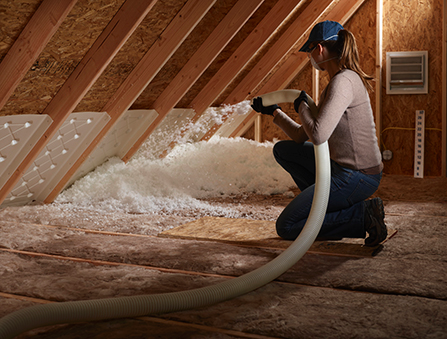
From oppressive heat waves scorching the asphalt in the summer months to month-long cold snaps freezing over outdoor areas during winter, climate extremes have rapidly become a way of life for many. At first glance, it may seem like home ownership comes with little control when it comes to extreme temperatures – after all, you’re stuck relying on your HVAC system to keep your interior climate at comfortable levels.
But what if we told you that home insulation can make all the difference? Read on as we demystify the science behind home insulation’s power and explore why tackling uncomfortable climates starts inside your walls.
How Insulation Works: Benefits in Different Climates
Insulation is more than just a barrier between you and the outside world. It’s an essential component in maintaining the comfort and efficiency of your home. By understanding how insulation works and its benefits, homeowners can better prepare their homes for extreme temperatures and reap additional advantages.
Temperature Control
The most immediate benefit of insulation is its ability to maintain a consistent temperature within your home. During hot summers, insulation prevents the transfer of heat from the outside into your interior spaces. Conversely, in the cold winter, it keeps the warm air generated by your heating system trapped inside. This results in less strain on your HVAC system, potentially extending its lifespan and reducing energy costs.
Energy Efficiency
Aside from temperature regulation, another significant advantage of insulation is improved energy efficiency. By reducing the need for your HVAC system to work overtime, insulation lessens energy consumption, leading to lower utility bills. It’s an environmentally friendly solution that not only saves you money but also reduces your carbon footprint.
Noise Reduction
While not directly related to temperature control, the noise reduction ability of insulation is worth mentioning. Insulation can act as a sound barrier, dampening noise from outside and providing a quieter, more peaceful home environment. This added benefit makes insulation an even more valuable investment for homeowners.
Insulation Types for Different Climates
Different climates call for different types of insulation. Here are some common options that work best in specific environments:
Fiberglass Insulation
Fiberglass insulation is a popular choice among homeowners due to its affordability and versatility. It can be used in hot and cold climates, making it an excellent all-around option.
Spray Foam Insulation
Spray foam insulation is one of the most efficient types of insulation available. It can expand to fill small cracks, creating a tight seal and preventing air leakage in areas that are hard to reach.
It’s ideal for extreme climates where maintaining a consistent temperature is crucial. It is essential for this type of insulation to be installed by experienced professionals. Visit www.ifoam.com to schedule a free consultation for your home.
Cellulose Insulation
Cellulose insulation is made from recycled materials, making it an eco-friendly option for homeowners. It’s also effective in dampening sound and can be used in hot and cold climates.
Reflective Insulation
Reflective insulation is best suited for hot climates, as it reflects radiant heat from the sun away from your home. This type of insulation often comes in the form of reflective foil or film and works best when used with another type of insulation for maximum effectiveness.
Conclusion
Extreme temperatures can be challenging for homeowners, but with the right insulation, you can combat climate extremes and create a more comfortable living environment. From temperature control and energy efficiency to noise reduction, the benefits of insulation are numerous.
With different types available for specific climates, it’s essential to research and choose the right insulation for your home. By investing in insulation, you’re not only improving your own comfort but also making a positive impact on the environment.




Be the first to comment